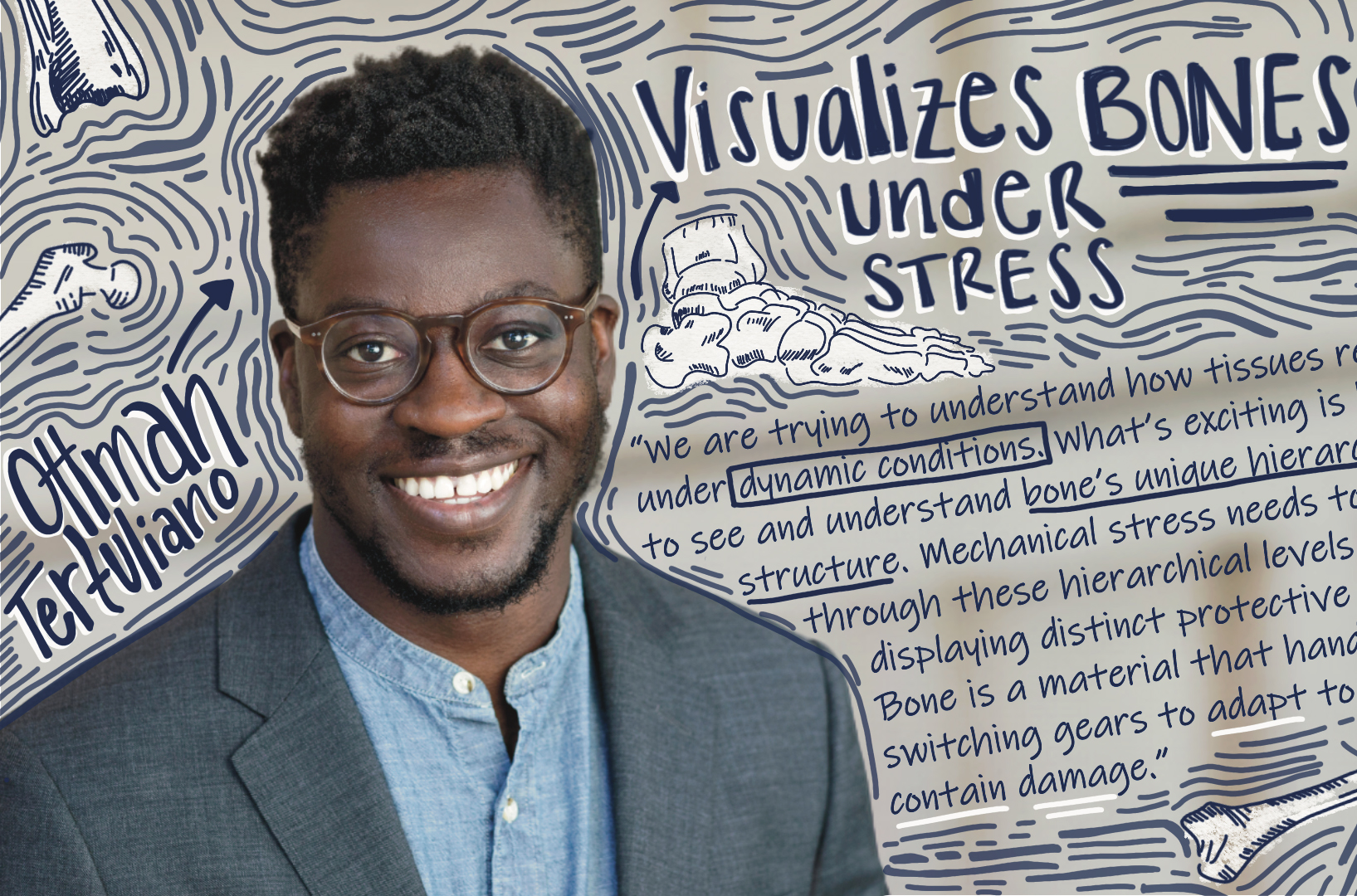Lightweight, tough and strong; our bones are forces of nature. Ottman Tertuliano joined the faculty of Penn’s School of Engineering and Applied Science last year to study bone as both a resilient living tissue and sophisticated organic material. An assistant professor in the Department of Mechanical Engineering and Applied Mechanics, Tertuliano creates new tools to measure tissue mechanics at the smallest scales imaginable.
The Tertuliano Lab is hard at work creating visual data that demonstrates how bones behave under dynamic stress—a significant unknown in health care.
Whether it be the everyday stress of walking or a more forceful impact, a healthy bone or one compromised by illness, Tertuliano has fine-tuned methods to visualize and explain it. His research has revealed a rich universe of bone’s protective structural mechanisms and his sights are set on thorough characterization and explanation. After an academic year building a lab, training graduate students and running inventive, labor-intensive experiments at Brookhaven National Laboratory, Tertuliano is ready to reap the rewards.
“I’m excited to get to the point where we are collecting really beautiful data. We’re trying to understand how tissues rearrange under dynamic conditions. In just one year—much quicker than I was expecting—we’ve solved a lot of our hardest problems and are ready to dig into some very complicated experiments,” says Tertuliano.
How does bone tissue rearrange? It depends how closely you look. Tertuliano’s research has revealed that bones respond to stress in vastly different ways at different scales.
“These are only some of the levels and variety we see in bone behavior,” says Tertuliano. “There are many, many more we are investigating. What’s exciting is being able to see and understand bone’s unique hierarchical structure. Mechanical force needs to work its way through tiered levels, each displaying distinct protective behaviors. Bone is a material that handles force by switching gears, in a sense, to adapt to stress and contain damage.
Understanding this material will be as valuable to clinicians as to mechanical engineers and materials scientists. The Tertuliano Lab is currently collaborating with radiation oncologists, bioengineers and materials scientists, pursuing insights into the weakening effects of proton radiation cancer treatment on bone tissue and fatigue fracture in metals.
Read more at Penn Engineering Today.








